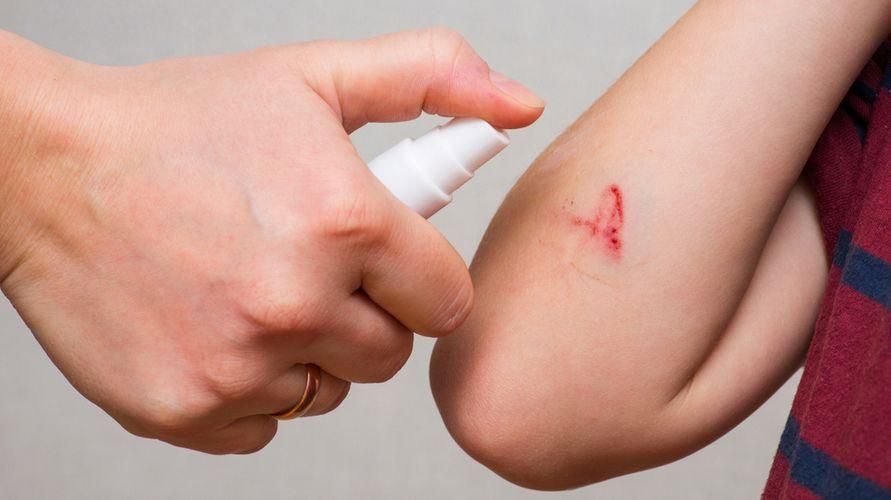Our daily life cannot be set apart from the risks of injury, whether it’s inflicted by ourself, other people, or things around us. Our body has the ability to heal itself, especially for minor injuries. However, wound care is still necessary to prevent minor wounds from becoming serious or infected.
Identifying Various Kinds of Wounds
Wounds are injuries that cause damage to body tissues, such as skin. There are various kinds of wounds based on their shape, for example cuts, scrapes, scars, and punctures. Types of wounds can also be classified based on the duration of healing and severity which affects the method of wound care. The following are various kinds of wounds:
Open or closed
Open wounds are wounds characterized by the opening of tissue or organs under the skin so that they are visible. For example, penetrating wounds, diabetic wounds, and burns. Whereas closed wounds are wounds that occur in tissues or organs under the skin that are not visible. For example, bruises, hematomas (accumulation of blood outside the blood vessels), and pressure ulcers (wounds caused by a prolonged pressure on the skin).
Acute or chronic
Acute wounds are wounds that can be expected to heal with no complication within a certain period of time, usually a maximum of 4-6 weeks. For instance, postoperative wounds, burns, and bite marks. Chronic wounds are wounds that usually take a longer time to heal (more than 6 weeks) and oftentimes come with complications. For instance, diabetic wounds and wounds caused by a pressure.
Internal or external
Internal wounds are caused by disorders of the circulatory system or nervous system function or decreased blood and oxygen supply. Meanwhile external wounds occur due to external forces or trauma caused by sharp or blunt objects.
Penetrating or non-penetrating
Non-penetrating wounds occur as a result of a blunt object impact or friction with another object’s surface. For example, bruises, abrasions, and tears. Penetrating wounds are wounds that occur when skins are penetrated. For instance, stab wounds, incisions, and post-operative wounds.
How to Prevent Wound Complications
Wound care is needed to prevent wound complications that may be inflicted by bacterial infection. As a result of infection, wounds take a longer time to heal and can spread to other parts of the body. To avoid the risk of infection, it is necessary to take the following steps:
- Clean the wound immediately with running water and soap
- Cover the wound with a bandage or gauze
- Change the bandage or gauze daily or whenever it gets wet or dirty
- Make sure the wound is clean and dry for at least the first 24 hours
- Wash hands with soap and running water before and after treating wounds
Wound Self-Care
Minor wounds such as small incisions usually do not require special treatment so you may self-treat your wounds. Wound care focuses on stopping the bleeding, cleaning the wound, and protecting it from the risk of infection. Because wounds caused by a certain occurrence may happen at any given time, it’s a better to have a first aid kit prepared at home. The kit include:
- Sterile gauze
- Cotton
- Iodine
- Burns medicine
- Painkillers
- Fever reducer
- Antiseptic liquid or gel
- Latex gloves
- Pins
- Scissors
- Thermometer
- Tweezers
- Medicinal plasters
- Over-the-counter medicine
Chronic and Stubborn Wounds
Chronic and stubborn wounds are wounds that do not heal despite of the treatment for more than 6 weeks, even years. Chronic wounds care requires more attention because pain and its side effects can affect the patient’s quality of life. Chronic wounds can lead to life-threatening complications.
The process of healing may take a longer time because of the condition of the wound itself (local factors) and conditions that affect other parts of the body (systemic factors). Blood supply to the wound area is a crucial factor in the healing process. Other important factors include:
- Presence of foreign material in the wound
- Cleanliness is not maintained
- Smoking habit
- Psychological stress
- Lack of nutrition
- Age
Wound healing process in the elderly is generally slower because the number of fibroblasts in the tissue decreases with age. Fibroblasts are cells that play an important role in the wound healing process. In addition, the presence of underlying diseases such as diabetes and heart disease can interfere with healing.
Wound Treatment by Nurse
Severe and potentially causing infection wounds require treatment from nurse to help ease the pain and quicker healing process. Nurse in charge of treating the wounds must has expertise in wound care acquired through education and training.
The practice of wound care by nurse is not merely wounds cleaning and dressing. Chronic and acute wounds demand attention of proficient nurse equipped with specialized skills to monitor and assess the condition of the wounds. Wound nurse can also provide education to the patients about best and correct wound care.
Personal Hygiene and Wound Care at Home
Good hygiene is very important in wound care. There is a tendency that the importance of good hygiene is overlooked and downplayed during wound care at home due to a lack of knowledge or limited equipment. The use of soap and clean water to wash the wound is the first step that should not be missed.
The next step is to make sure the wound is free of dirt and moisture, which can cause complications and infection thus slowing the healing process. Hands should always be clean both before and after treating the wounds. Open wounds in particular are more susceptible to infection if good hygiene is not maintained. If the wound does not heal or there are signs of infection, you should go to the hospital for treatment from medical personnel.



